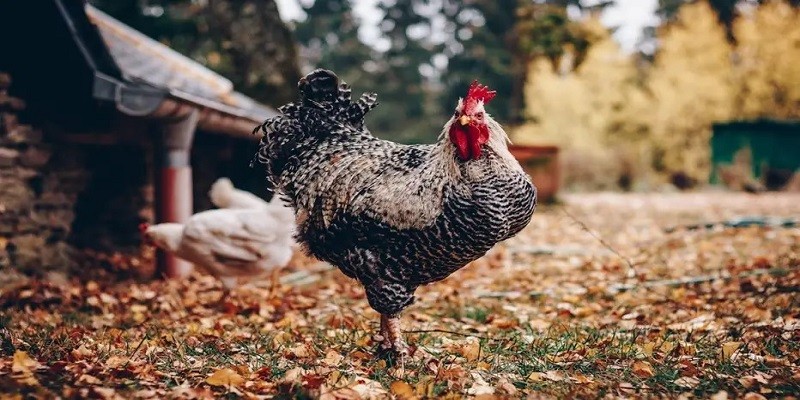Last Updated on January 14, 2025 by Pauline G. Carter
Raising poultry is not an easy task, and keeping it in good and healthy condition is especially difficult.
The welfare and production of a flock depend heavily on the health of the flock’s birds. Healthy birds have a higher chance of thriving, producing high-quality eggs or meat. A lot of farms have a health certificate by Vista that proves that their flocks are healthy.
Poultry flocks can be significantly impacted by diseases, which result in decreased output, higher mortality rates, and economic losses. Additionally, illnesses can weaken a bird’s immune system, making them more vulnerable to different types of infections and health problems.
Understanding of Common Poultry Diseases
Everyone that wants to start keeping poultry should first research the subject of poultry diseases, and try to understand which are the most common and figure out the best ways to prevent them.
Overview of Common Diseases in Poultry
Poultry can be affected by various diseases, including respiratory infections like Newcastle disease and avian influenza. Bacterial, viral, and parasitic infections like salmonellosis, bronchitis, and external parasites are also very common among birds.
Symptoms and Signs to Look Out For
For early detection and efficient management of poultry diseases, it is essential to recognize their symptoms and indicators.
The most noticeable and easy-to-spot symptoms are respiratory distress, coughing, sneezing, nasal discharge, diarrhea, reduced feed intake, decreased activity, weight loss, poor feather quality, odd behavior, and higher death rates.
Consequences of Untreated Diseases
Diseases that affect poultry can have serious repercussions if not handled correctly and instantly.
They can spread quickly within a flock, which affects the performance of the flock and increases mortality, decreases productivity, reduces feed efficiency, and other negative effects.
In addition, zoonotic illnesses can spread to humans, endangering human health.
Importance of Biosecurity in Preventing Disease Outbreaks
To stop the introduction and spread of illnesses in chicken flocks, biosecurity measures are essential.
The risk of disease transmission from external sources, such as wild birds, and infected humans, is reduced by the implementation of good biosecurity procedures.
Controlling the Entry and Spread of Diseases
The goal of biosecurity measures is to prevent and restrict the spread and introduction of pathogens. This involves establishing physical barriers, restricting the movement of people and equipment, maintaining proper hygiene, and putting in place the necessary disease surveillance protocols.
Key Biosecurity Practices:
- Isolation and quarantine are common practices for preventing the spread of diseases. Every new bird is isolated and quarantined from the flock before being sent out with them after a while.
- Regular cleaning and disinfecting can greatly lower the chance of disease transmission through regular thorough cleaning and disinfection of premises, tools, and vehicles that are used for keeping the flock.
- Limiting access to the poultry area helps reduce the chance of viruses being introduced by people, animals, and other wildlife.
- Visitor protocols can also help prevent illnesses. Establishing visitor procedures, such as hand cleanliness, protective gear, and limited interaction with the birds, helps in the prevention process.
Vaccinations and Disease Prevention
Vaccinations play a crucial role in preventing and controlling infectious diseases in poultry. They stimulate the bird’s immune system to develop protective immunity against specific pathogens, reducing the severity and spread of diseases.
Common Vaccines for Poultry
For specific diseases including Newcastle disease, infectious bronchitis, Marek’s disease, and coccidiosis, there are numerous vaccinations available for poultry.
Depending on the vaccine type, vaccinations can be given as injections, sprays, drops in the eyes, or drinking water.
Vaccination Schedules and Administration Techniques
To achieve the greatest level of protection, it is crucial to stick to recommended immunization regimens.
Following the manufacturer’s recommendations, vaccinations should be given to birds taking into account their age, the frequency of their disease, and the effectiveness of the vaccine.
For vaccination to be successful, proper administration methods, including the right dosage and storage conditions are essential.
Benefits and Limitations of Vaccinations
Vaccinations offer several benefits, including reduced disease incidence, improved flock health, and increased productivity. However, vaccines are unable to provide 100% protection, and they require periodic re-vaccination.
Proper Nutrition and Hygiene Practices
Providing a balanced diet is vital for maintaining optimal poultry health. Nutritional requirements vary depending on the bird’s age, breed, sex, and production purpose.
A good diet should include essential nutrients such as proteins, carbohydrates, fats, vitamins, minerals, and water.
Importance of Balanced Diets and Access to Clean Water
A balanced diet provides proper growth, immune function, and reproduction.
Also, clean and fresh water is essential for hydration, digestion, nutrient absorption, and waste elimination. Water sources should be regularly monitored and kept free from contaminants.
Conclusion
Paying careful attention to the health and welfare of the flock when growing poultry is crucial.
Neglecting a disease can have serious repercussions. In order to avoid disease outbreaks and limit the transmission of pathogens, biosecurity measures are crucial.
The danger of disease transmission can be considerably decreased by putting in place procedures like isolation and quarantine, regular cleaning and disinfection, and restricting access to poultry areas. Vaccinations and nutrition are also important disease prevention strategies.

